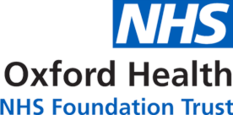ObjectiveTo estimate how many patients who sustain a head injury might benefit from intervention and support each year and to consider whether relationships can be found between demographic data relating to patients' circumstances at the time of head injury, and their outcomes six months later.DesignData collected on 625 patients through follow-up interviews and assessments by the Oxford Head Injury Service for a randomized controlled trial of intervention conducted in 1993-94.SettingA mixed rural and urban Health District with a population of approximately 560,000.PatientsPatients were aged between 16 and 65 years and resident in Oxfordshire. They presented over 13 months to accident and emergency departments, or were admitted to hospital. All were diagnosed as having suffered a head injury.Outcome measuresThe Rivermead Head Injury Follow Up Questionnaire and the Rivermead Post Concussion Symptoms Questionnaire.ResultsData are given on age, sex, social circumstances, employment, cause of injury, severity of associated injuries, post-traumatic amnesia (PTA), anticonvulsants, postconcussion symptoms and activities of everyday life. Outcome at six months was significantly worse for those who had been assaulted as against all other causes of injury combined (p = 0.0001); and/or had been admitted to hospital (p = 0.0001)l and/or had sustained more severe additional injuries (p = 0.04); and/or had experienced any PTA (p = 0.00001). The minimum incidence of such injuries in those aged 16-65, calculated for Oxfordshire, is 292 per annum (74/100,000 aged 16-65 per year).ConclusionsIn the general population 52/100,000 patients per annum will experience more serious head injuries as indicated by hospital admission and/or one or more fractures and/or any length of PTA and/or having been assaulted. This group may benefit from monitoring and support and their needs should be considered when planning services.
Humans
,Amnesia
,Craniocerebral Trauma
,Follow-Up Studies
,Marital Status
,Interpersonal Relations
,Interview, Psychological
,Accidents
,Violence
,Adolescent
,Adult
,Aged
,Middle Aged
,Employment
,Female
,Male
,Surveys and Questionnaires



